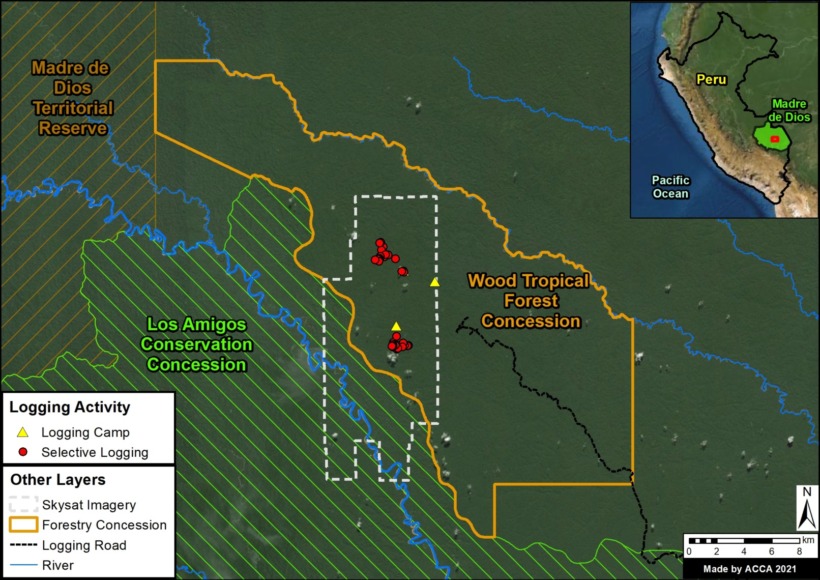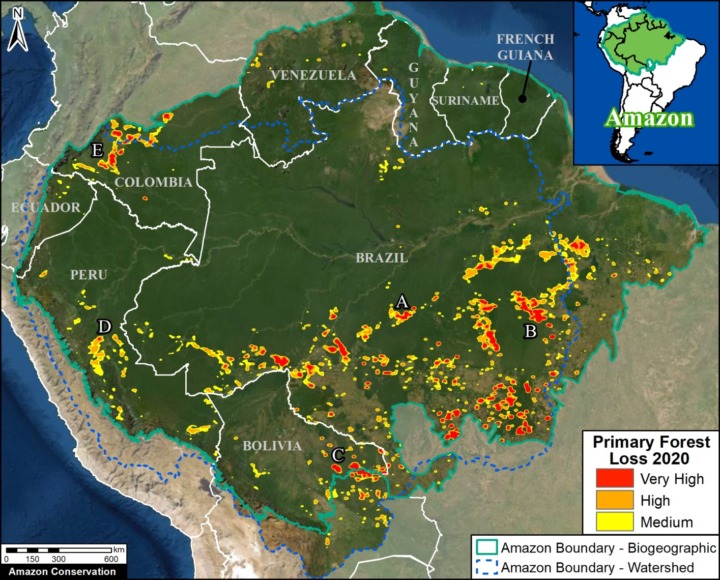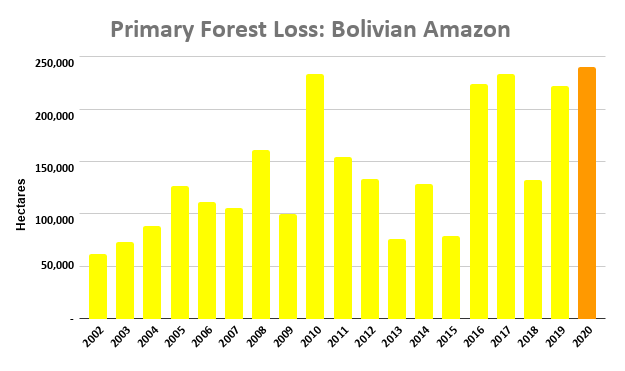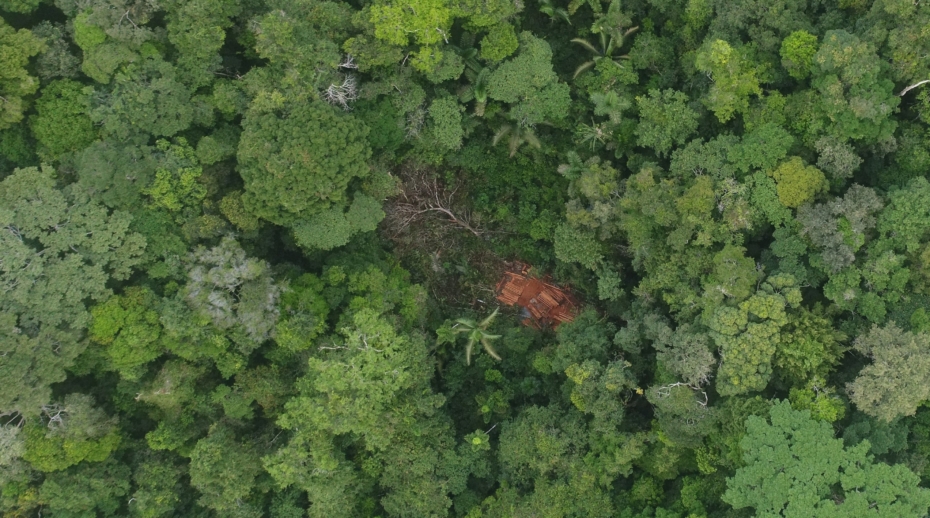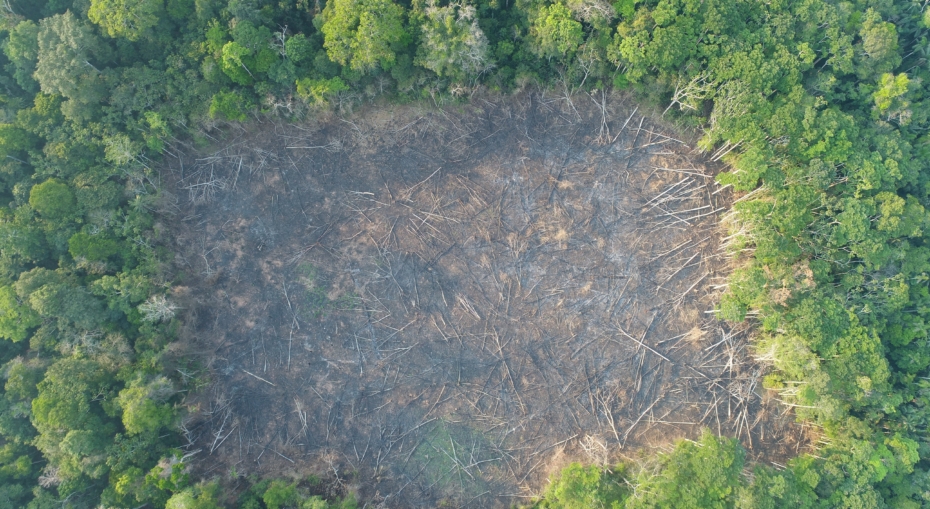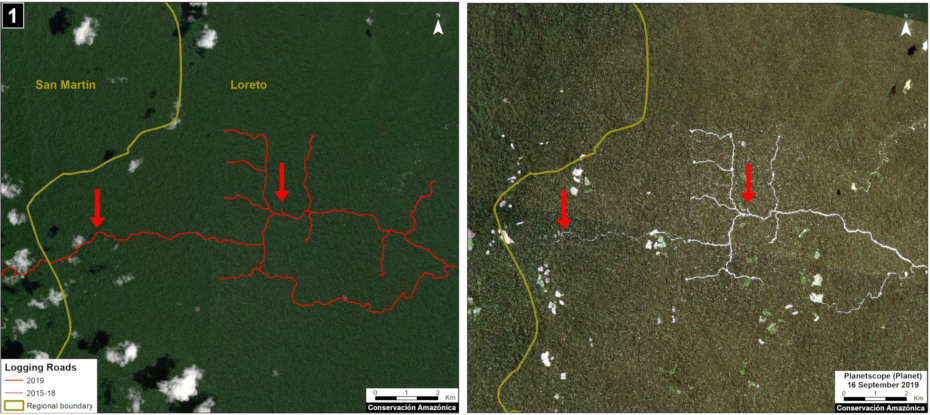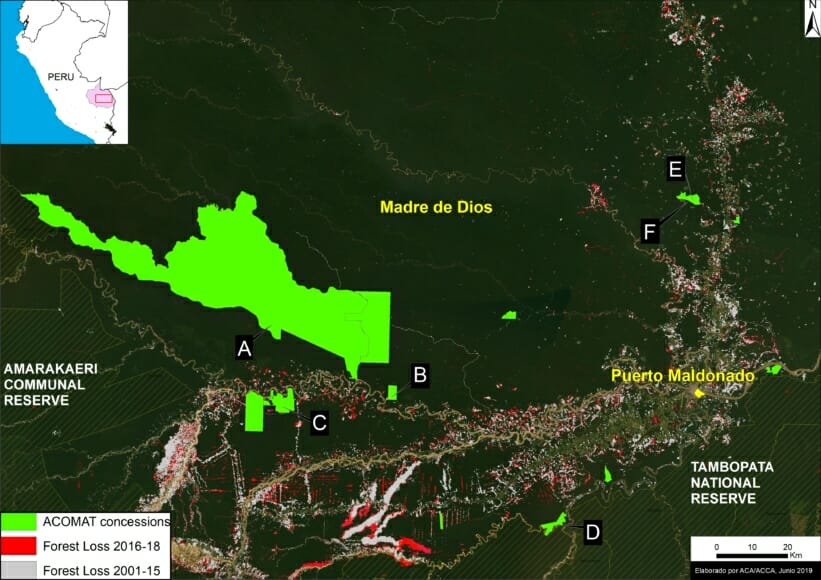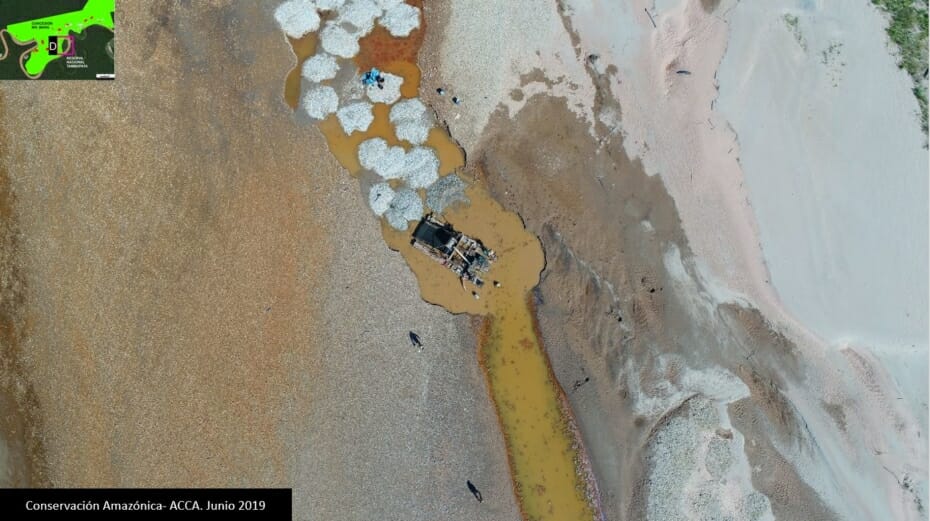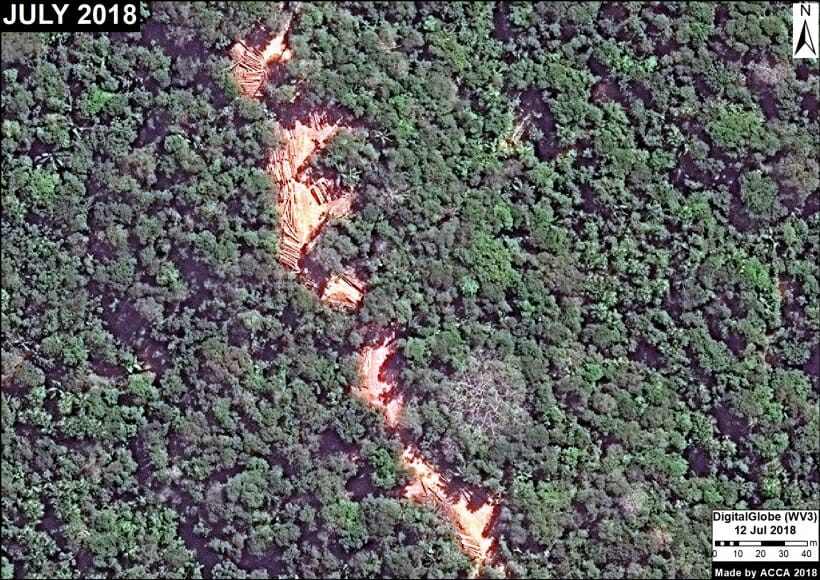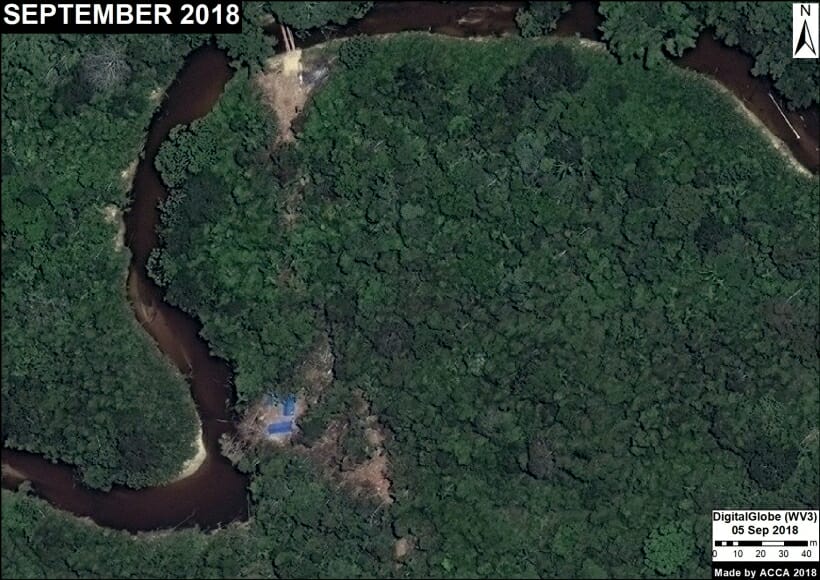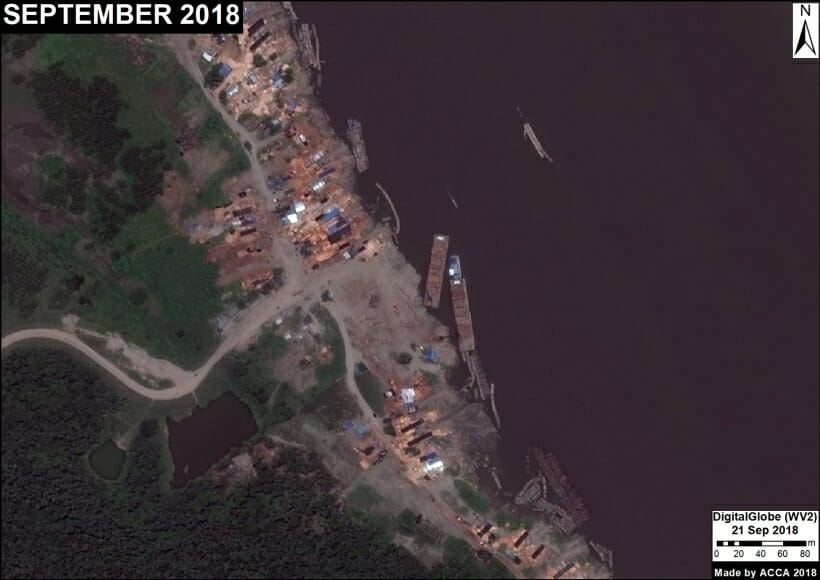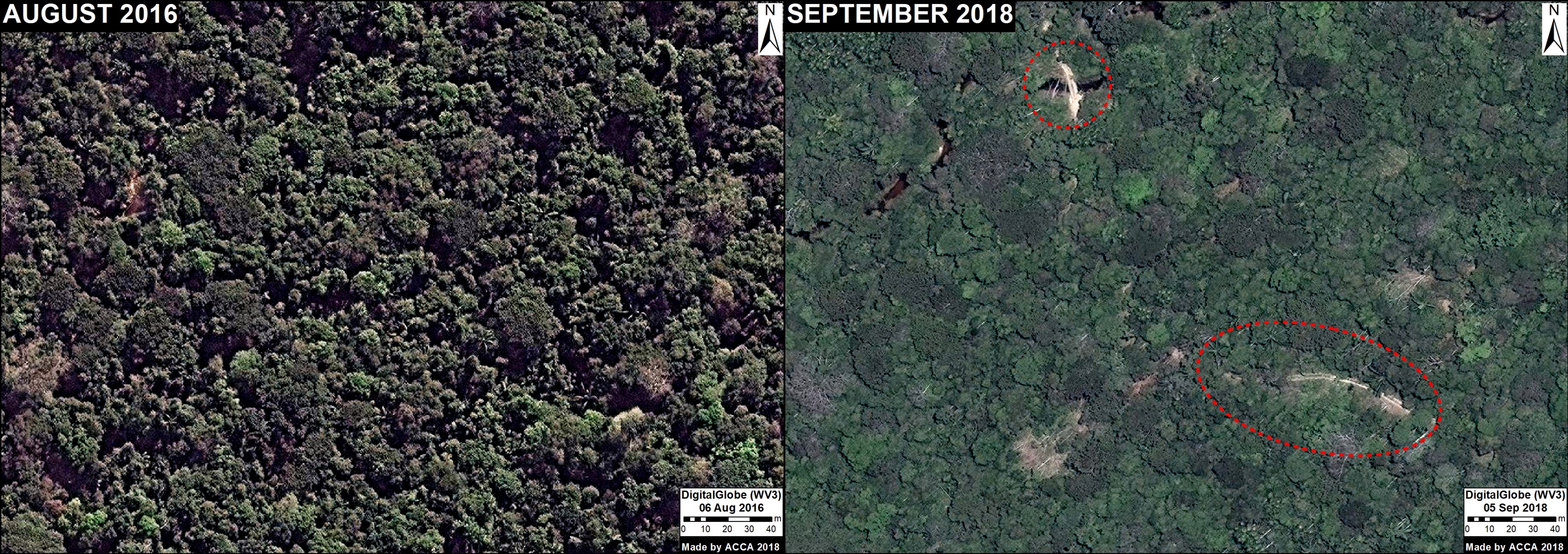
Amazon Conservation’s MAAP program specializes in reporting on the most urgent deforestation threats facing the Amazon and producing big-picture analyses of key Amazon-wide issues.
This report uniquely presents a view into the complicated but critical issue of murders of environmental defenders, examining the relationship between the location of these killings and deforestation in the Peruvian Amazon to provide a better understanding of the context of their deaths.
Between 2010 and 2022, an estimated 29 Peruvian environmentalists and Indigenous leaders were killed while defending various parts of Peru’s Amazon from invaders seeking to exploit its resources (RAISG 2022).
Importantly, the frequency of these murders has increased in recent years, with nearly half (14 out of 29) occurring since 2020.
Our findings indicate that these murders are connected to five major issues in the Peruvian Amazon:
Illegal gold mining, Illegal logging, Illicit crops (coca), Land trafficking, and Protesting.
This report focuses on the first three (Illegal gold mining, Illegal logging, and Illicit crops).
Base Map
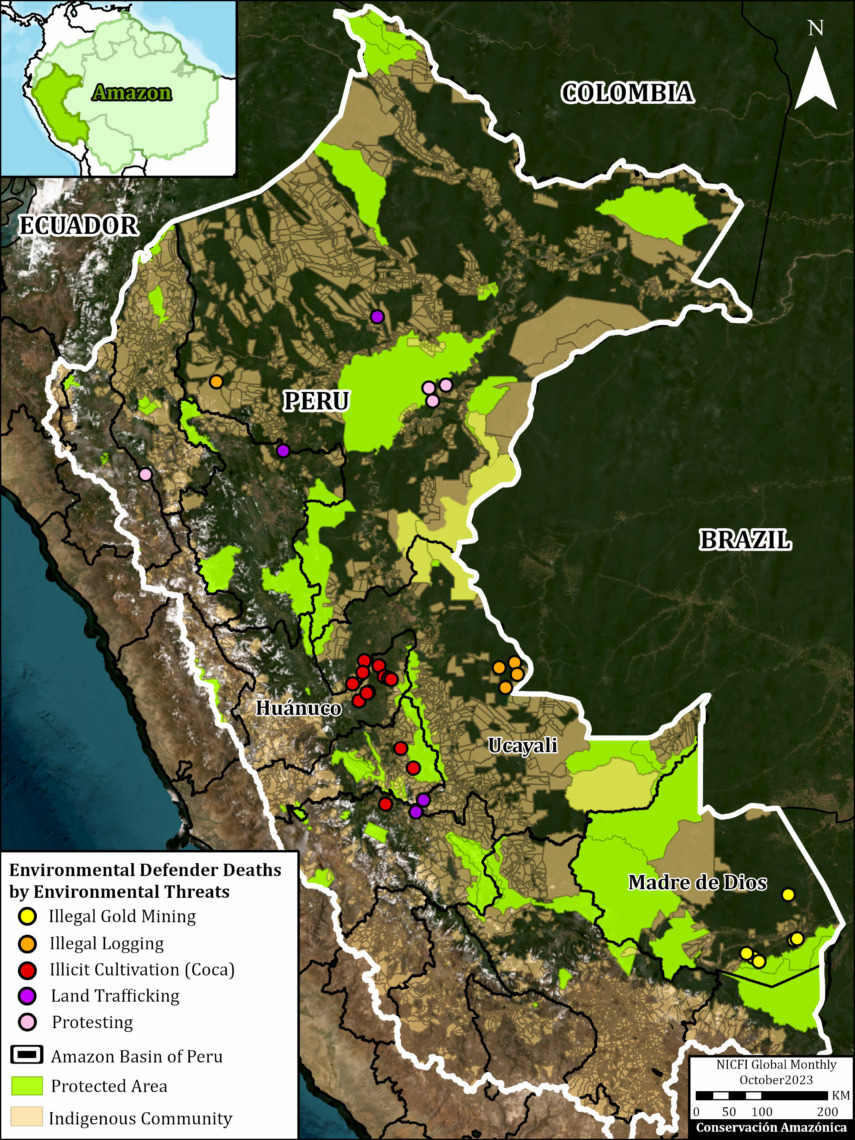
The Base Map shows the location of the 29 documented environmental defenders killed in Peru between 2010-2022.
It also indicates the environmental threat related to each death as the suspected or confirmed motive for the crime: Illegal Gold Mining, Illegal Logging, Illicit Crops (coca), Land Trafficking, and Protest.
Note that many of the murders occurred in geographic clusters that coincide with the major environmental conflict of that specific area.
For example, gold mining is a major cause of conflict in the southern Peruvian Amazon, while illegal logging and illicit crops are more common threats in the central Peruvian Amazon.
Murders related to Illegal Gold Mining
Illegal gold mining has long been, and continues to be, a major issue in the southern Peruvian Amazon (Madre de Dios region), particularly in Indigenous territories and protected area buffer zones (MAAP#208).
For example, Figure 1 illustrates the extensive gold mining deforestation (indicated in orange) in the Tambopata National Reserve buffer zone and surrounding Indigenous territories.

Since 2015, three environmental defenders have been killed within or near the Tambopata National Reserve buffer zone (see yellow dots in Figure 1). All three cases involved forestry concessionaires trying to defend their concession from illegal mining invasion.
In 2015, Alfredo Vracko Neuenschwander was killed near the critical mining area known as “La Pampa” located in the core of the buffer zone. Note that during the two years prior to his death, more than 1,700 hectares were deforested in La Pampa due to illegal gold mining (MAAP #1). Vracko, who was president of the Madre de Dios Federation of Forestry and Reforestation Concessionaires at the time, is believed to have been killed by illegal miners who were scheduled to be evicted from his forestry concession on the same day. However, his murder remains officially unsolved.
In 2020, Roberto Carlos Pacheco Villanueva was killed just outside the Tambopata buffer zone. Villanueva owned a forestry concession that had been illegally deforested and burned by invaders linked to illegal mining. Having filed legal complaints about the illegal use of his land, Villanueva faced numerous threats against his life in the years leading up to his murder. While still unsolved, it is believed that his murder was committed by the same miners who invaded his concession.
More recently, in 2022, Juan Julio Fernández Hanco was murdered just off the Interoceanic Highway near the edge of the Tambopata buffer zone. During this period (2021-2023), nearly 24,000 hectares were deforested due to gold mining in this area (MAAP #195). The investigation is ongoing, with the suspects being illegal miners who invaded Juan Julio’s reforestation concessions.
Murders related to Illegal Logging
Illegal logging has been a significant problem across the Peruvian Amazon for years. A recent report revealed that over 20% of timber harvested in Peru in 2021 came from illegal origins (OSINFOR, 2024). Loreto, Madre de Dios, Amazonas, and Ucayali were identified as the regions with the highest levels of unauthorized timber extraction.

In 2014, illegal loggers murdered four men from the community of Alto Tamaya-Saweto, in one of the most well-known murder cases of Peruvian environmental defenders. These defenders (Edwin Chota Valera, Francisco Pinedo Ramírez, Jorge Ríos Pérez, and Leoncio Quintisima Meléndez) were killed along the Peru-Brazil border (see orange dots in Figure 2), following a decade of complaints from Chota about the presence of criminal logging groups in their community. Ten years later, in April 2024, a group of loggers were found guilty of the murders and sentenced to nearly 30 years in prison. This case has since been appealed with the expectation of going to Peru’s supreme court.
Murders related to Illicit Crops (Coca)
Official data indicates that the surface area of coca production in Peru continues to increase, particularly in the central Peruvian Amazon along the Andes Mountains (in the regions of Ucayali and Huánuco). Since 2010, ten environmental defenders have been killed in this area related to their fight against coca-related activities (see red dots in Figure 3).

Three environmental defenders (Santiago Vega Chota, Yenes Ríos Bonsano, and Herasmo García Grau) were killed in 2020 and 2021 within or near their communities of Sinchi Roca and Puerto Nuevo in the region of Ucayali, following their attempts to monitor their communities’ territories for coca production. Both communities are located within a coca production zone known as Aguaytía, which experienced a 158% increase in coca cultivation between 2018 and 2022 (DEVIDA 2022).
Between 2010 and 2020, four environmental defenders (Segundo José Reategui, Manuel Tapullima, Justo Gonzales Sangama, and Arbildo Melendez) were murdered in or near the Unipacuyacu Indigenous community. These four deaths have been linked to illegal coca production by outsiders on community lands that have not yet been officially titled by the government, which has facilitated these invasions. Unipacuyacu is located within the Pichis-Palcazu-Pachitea coca production zone spanning the Huánuco and Pasco regions, where coca cultivation increased by more than 450% between 2018 and 2022 (DEVIDA 2022).
Finally, three other environmental defenders (Jesús Berti Antaihua Quispe, Gemerson Pizango Narvaes, and Nusat Parisada Benavides de la Cruz) were killed in 2022 in their communities of Santa Teresa and Cleyton. These two indigenous communities are located within and just outside of the in an area outside of the El Sira Communal Reserve buffer zone. During the four years leading up to their deaths, coca production in El Sira and its buffer zone increased by over 500% (DEVIDA 2022). While unconfirmed, it is believed that these murders were committed by mafias tied to drug trafficking and illegal mining.
Regulatory Basis
Peru ranks among the countries with the highest number of environmental defender deaths worldwide (Global Witness 2023).
Peru’s National Plan for Human Rights 2018-2021, defines an environmental defender as someone who: As an individual or collective, carries out a legitimate activity, paid or not, consisting of demanding and promoting, within the legally permitted framework, in a peaceful and nonviolent manner, the effectiveness of violated rights. Their efforts are usually manifested publicly through demands and raised through regular process channels, conforming with the framework devoted to these fundamental rights.
To address the vulnerability of environmental defenders, the Peruvian government, specifically the Ministry of Justice and Human Rights (MINJUSDH), has developed regulations to ensure their protection. The most important of these are:
| Regulation | Title | Importance |
|
Supreme Decree N 002-2018-JUS |
National Plan for Human Rights 2018-2021 |
Establishes that environmental defenders are a group of special protection and requests that the state adopts measures to protect them. |
|
Supreme Decree 004-2021-JUS |
Intersectoral Mechanism for the Protection of Human Rights Defenders |
Establishes the principles, measures, and proceedings to guarantee the prevention, protection, and access to justice for human rights defenders prior to risk situations, being the highest ranking standard in the country. |
|
Ministerial Resolution 255-2020-JUS |
Registry on Risk Situations for Human Rights Defenders
|
Recognizes, analyzes, and manages information about the risks that human rights defenders face, and adopts actions to prevent threats. |
Peru has also taken an intersectoral approach by coordinating participation among eight ministries: Ministry of Justice and Human Rights, Ministry of the Interior, Ministry of the Environment, Ministry of Culture, Ministry of Woman and Vulnerable Populations, Ministry of External Relations, Ministry of Energy and Mines, and Ministry of Agriculture and Irrigation Development. A public implementing agency, the National Commission for Development and Life Without Drugs (DEVIDA), also cooperates with this effort.
Despite these efforts, defenders continue to face criminalization, legal harassment, and threats of violence and murder. This shows the urgent need to strengthen their protection and institutional support in Peru.
In response, the Peruvian Congress has recently enacted three new laws to further protect human rights defenders. These include (i) Bill 4686/2022-CR, a law that recognizes and protects defenders of environmental rights, and (ii) Bill 2069/2021-PE, a law for the protection and assistance of communal and/or Indigenous or native leaders at risk. Moving forward, how the ongoing Alto Tamaya-Saweto case proceeds through Peru’s Supreme Court will be crucial to future efforts to protect environmental and human rights defenders.
References
Comisión Nacional Para El Desarrollo y Vida Sin Drogas (DEVIDA). 2023. Perú: Monitoreo de cultivos de coca 2022.
Global Witness 2023. Casi 2.000 personas defensoras de la tierra y el medioambiente asesinadas entre 2012 y 2022 por proteger el planeta.
Organismo de Supervisión de los Recursos Forestales y de Fauna Silvestre (OSINFOR). 2024. Estimación del índice y porcentaje de tala y comercio ilegal de madera en el Perú 2021.
Red Amazónica de Información Socioambiental Georreferenciada (RAISG). 2022. Presiones, amenazas y violencia en la Amazonía peruana.
Acknowledgments
This report was prepared with support from the Instituto de Bien Común (IBC).
Citation
Montoya M, Bonilla A, Novoa S, Tipula P, Salisbury D, Quispe M, Finer M, Folhadella A, Cohen M (2024) Killing of Environmental Defenders in the Peruvian Amazon. MAAP:218.


